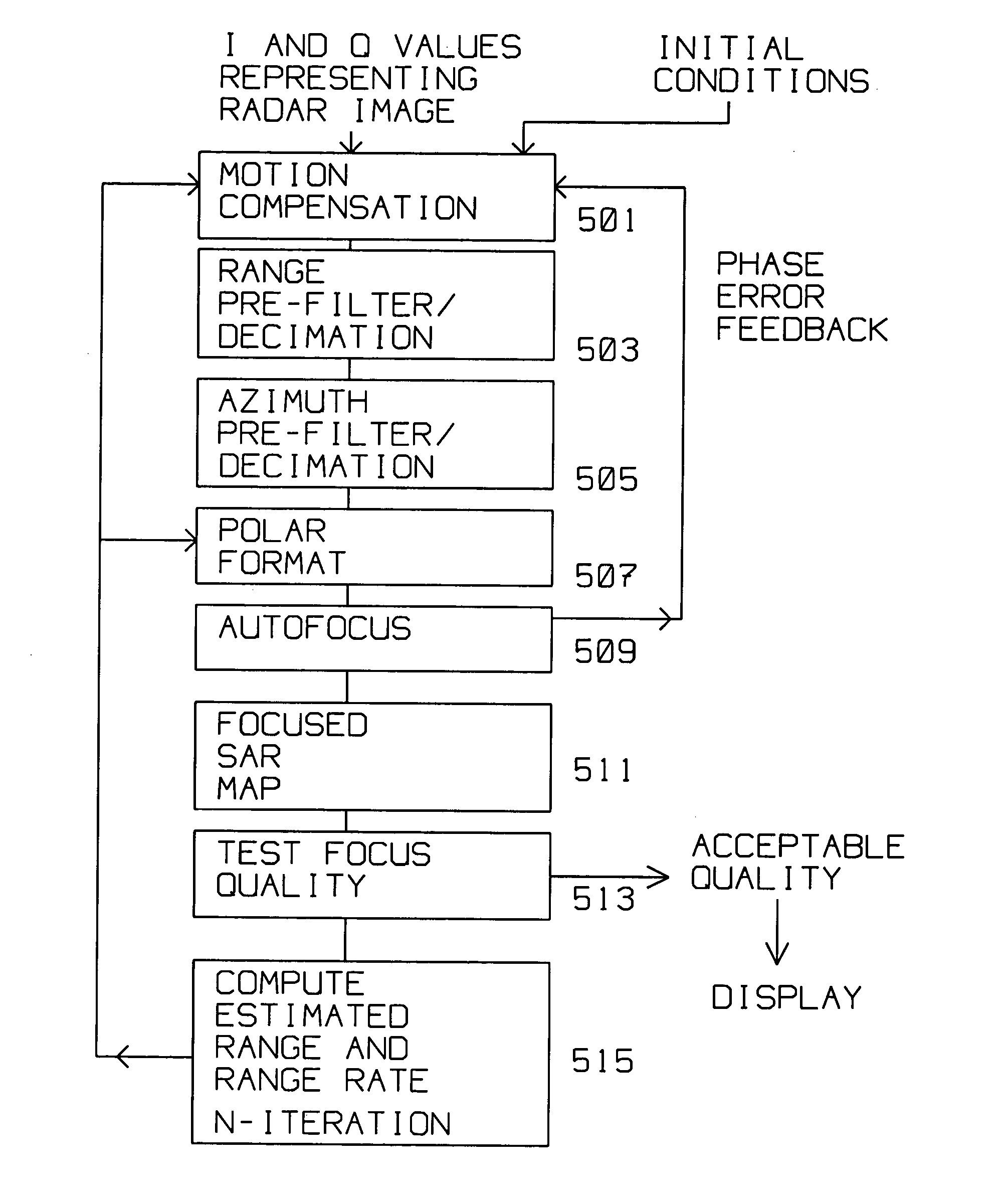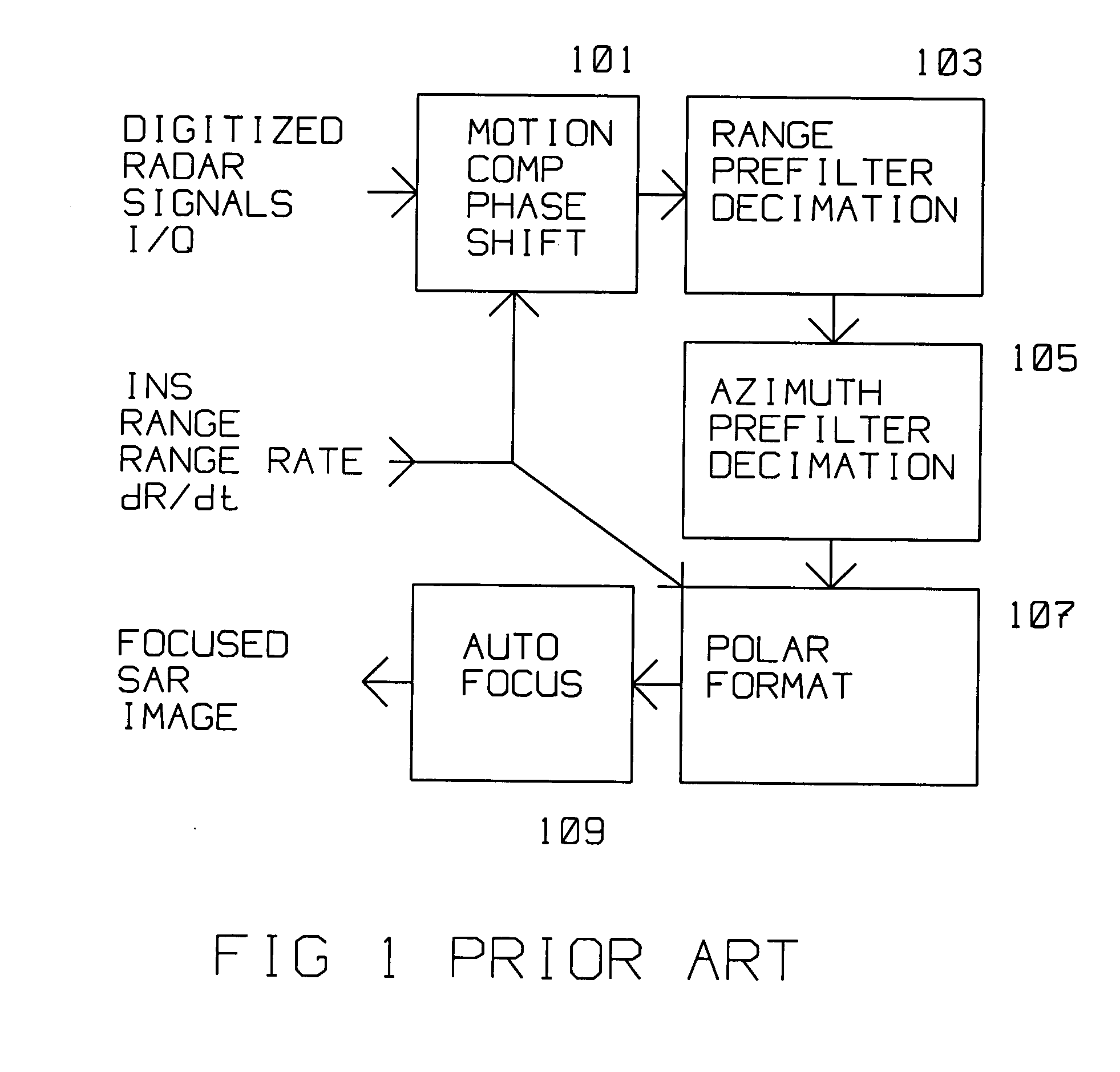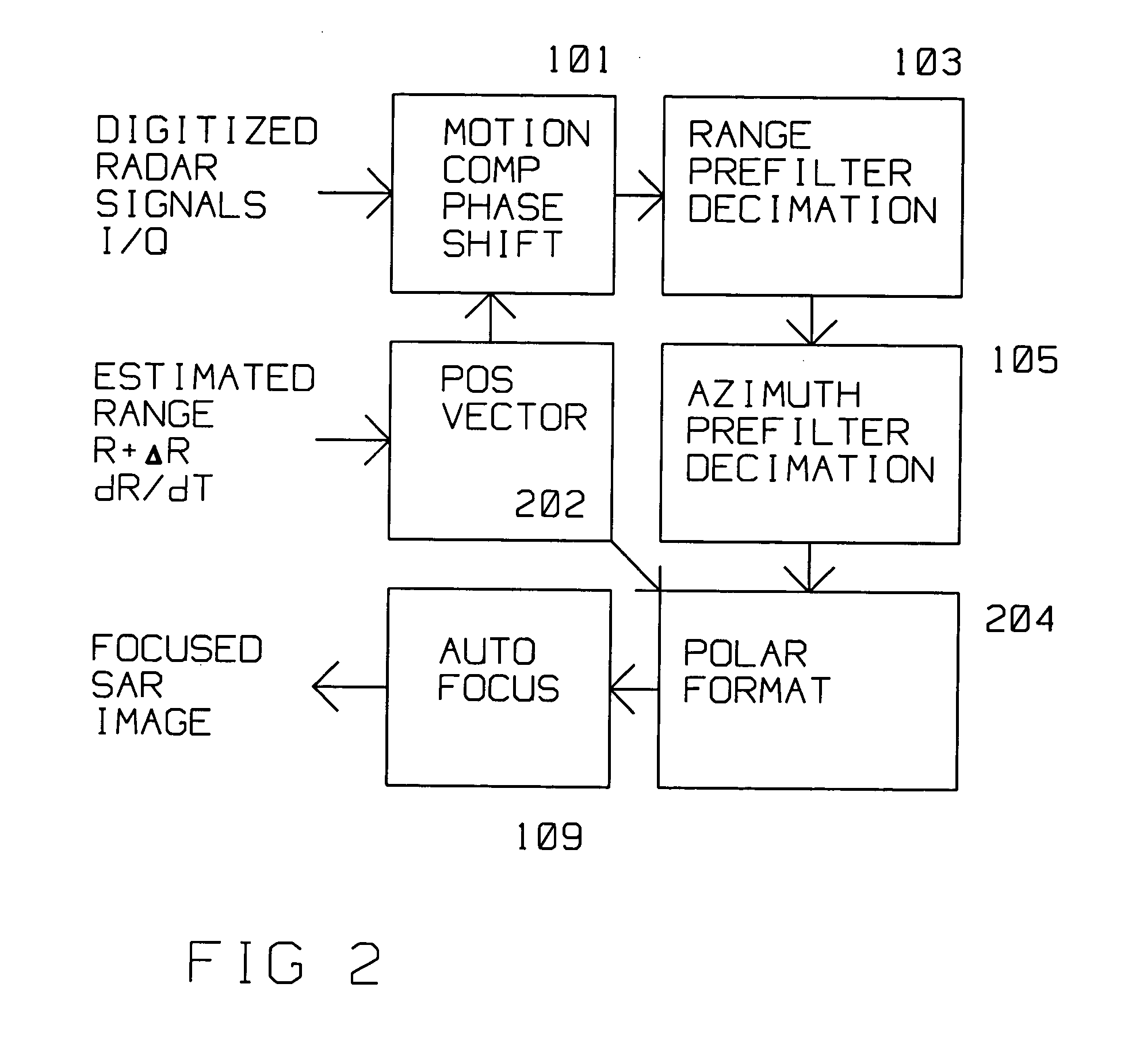Method for SAR processing without INS data
- Summary
- Abstract
- Description
- Claims
- Application Information
AI Technical Summary
Benefits of technology
Problems solved by technology
Method used
Image
Examples
Embodiment Construction
The present invention describes an apparatus and method of focusing SAR images without the use of inertial navigation system / Ground Position Satellite system (INS / GPS) moving platform motion information.
FIG. 1 shows the prior art approach to generating an focused SAR image. Digitized radar signals (the I and Q components) are phase shifted by motion compensation 101. This motion compensation is required to reduce phase errors to the point where known autofocus algorithms can function well, and reduce the phase errors further. Motion compensation 101 adjusts the starting phase and frequency of returned pulses in response to the changing range such that the phase of the returned pulse at the image center remains constant. Motion compensation 101 uses range and range rate information computed from the INS / GPS data. Typically, range pre-filter 103 with (optional) decimation and azimuth pre-filter 105 with (optional) decimation process the motion compensated raw data. Decimation is app...
PUM
 Login to view more
Login to view more Abstract
Description
Claims
Application Information
 Login to view more
Login to view more - R&D Engineer
- R&D Manager
- IP Professional
- Industry Leading Data Capabilities
- Powerful AI technology
- Patent DNA Extraction
Browse by: Latest US Patents, China's latest patents, Technical Efficacy Thesaurus, Application Domain, Technology Topic.
© 2024 PatSnap. All rights reserved.Legal|Privacy policy|Modern Slavery Act Transparency Statement|Sitemap



